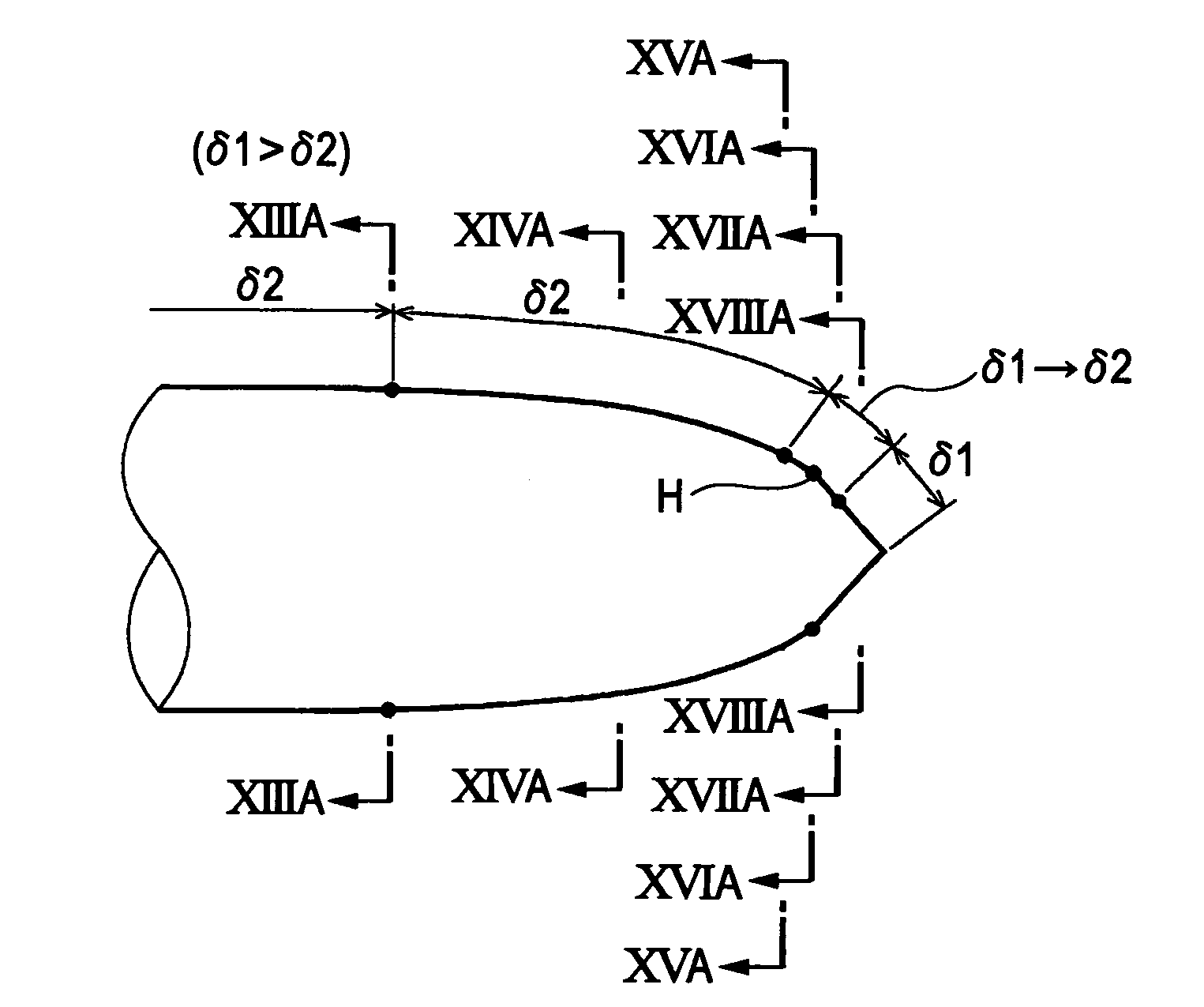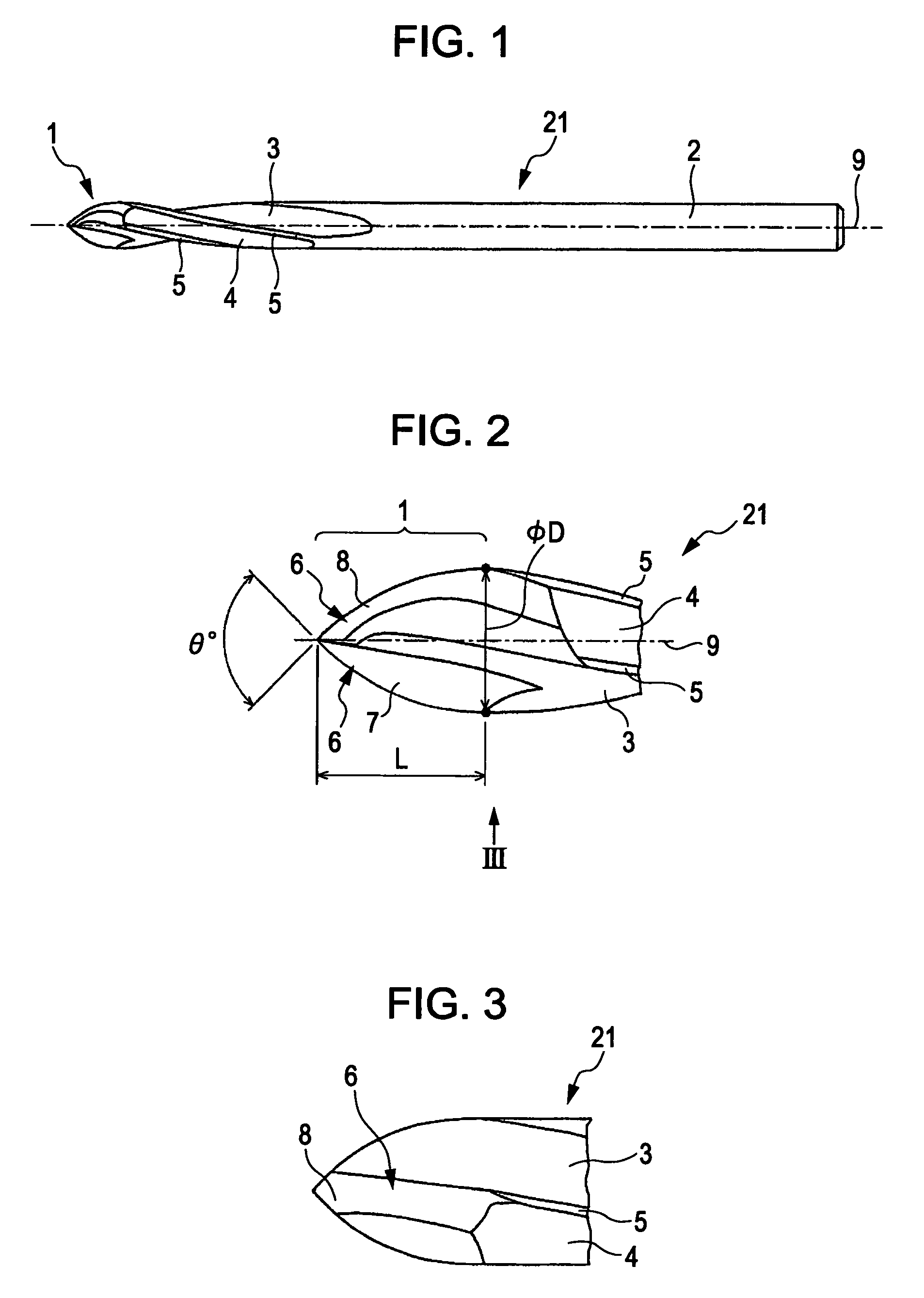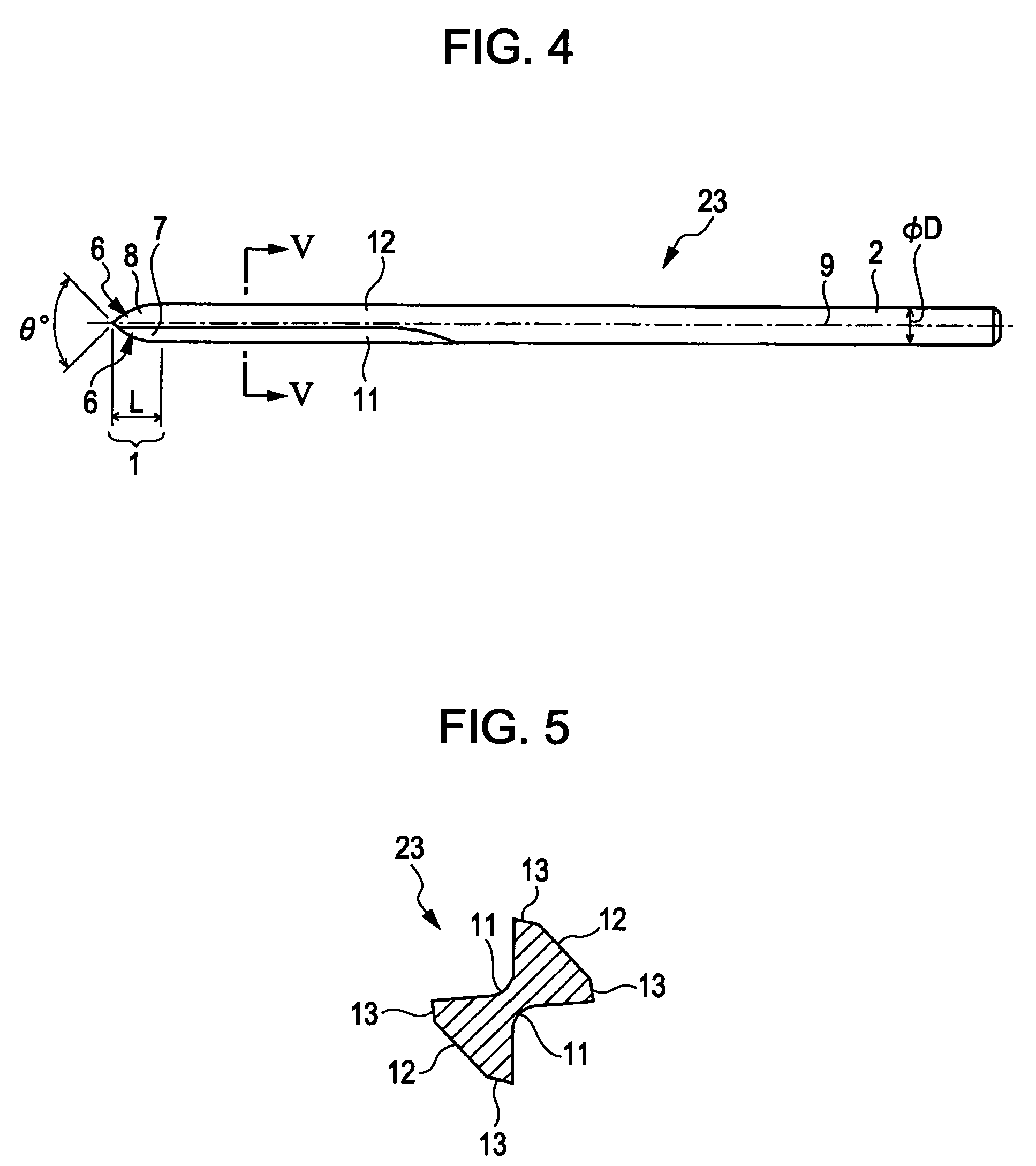Drill
a drill and drill bit technology, applied in the field of drill bit, can solve the problems of reducing the wear resistance of the drill bit, low wear resistance of the double angle drill bit, etc., and achieve the effects of reducing the point angle, reducing the cutting load, and increasing the reaming performance of the cutting edge section close to the rear end among the entire cutting edg
- Summary
- Abstract
- Description
- Claims
- Application Information
AI Technical Summary
Benefits of technology
Problems solved by technology
Method used
Image
Examples
Embodiment Construction
[0060]Hereinafter, embodiments of the present invention are described with reference to the attached drawings. These embodiments are merely examples of the present invention, and hence the present invention should not be limited to these embodiments.
[0061]First, two examples of drills will be described, to which the shape of a drill of the present invention may be applied. One of the two drills is a drill having a helical flute (see FIGS. 1 to 3), and the other is a drill having a straight flute (see FIGS. 4 and 5).
[0062]FIG. 1 is a side view showing the drill having the helical flute.
[0063]Referring to FIG. 1, a drill 21 includes a cutter edge section 1 and a shank section 2. Helical flutes 3 are formed on the cutter edge section 1 and the shank section 2.
[0064]FIG. 2 is an enlarged view showing a tip section of the drill 21 in FIG. 1.
[0065]The cutter edge section 1 includes a pair of cutting edges 6 arranged symmetrically about an axis 9. The cutting edges 6 each have a rake face ...
PUM
| Property | Measurement | Unit |
|---|---|---|
| point angle | aaaaa | aaaaa |
| point angle | aaaaa | aaaaa |
| point angle | aaaaa | aaaaa |
Abstract
Description
Claims
Application Information
 Login to View More
Login to View More - R&D
- Intellectual Property
- Life Sciences
- Materials
- Tech Scout
- Unparalleled Data Quality
- Higher Quality Content
- 60% Fewer Hallucinations
Browse by: Latest US Patents, China's latest patents, Technical Efficacy Thesaurus, Application Domain, Technology Topic, Popular Technical Reports.
© 2025 PatSnap. All rights reserved.Legal|Privacy policy|Modern Slavery Act Transparency Statement|Sitemap|About US| Contact US: help@patsnap.com



